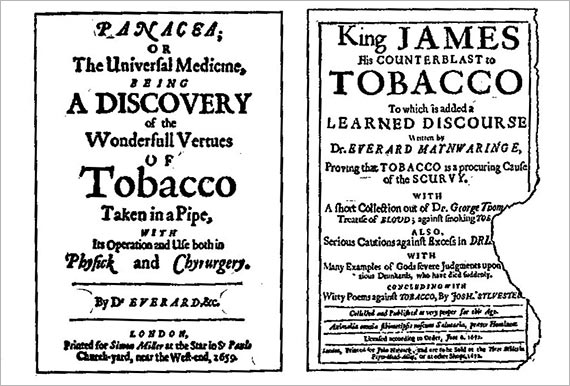History of Healthcare Advertising, Part 3
17th century tobacco advertising
Tobacco use dates back to the earliest recorded history, but its health affects have been debated to this day. In this post, I’ll look at healthcare advertising’s conflicting viewpoints on tobacco and health.

In the beginning of the 1600s, King James I believed that tobacco smoking presented a major health problem. But by mid century, the king and members of the ruling classes changed their tune when the Virginia leaf became quite a profitable product for England’s American colonies.
Promoting health benefits and ills on the whim of commerce and political gain
However, in 1672 there was a reprint of the King’s “Counterblast to Tobacco” originally written in 1604. It advertised that tobacco was the main cause of scurvy, warning people not to use it. The king backed up his claims with a discourse written by Dr. Everard Maynwaringe, considered to be the authority on scurvy at that time. Maynwaringe wrote extensively on the subject to promote his “Scorbute pill,” but was later found to be a quack.
On the other hand, a highly respected physician of his time, Dr. Giles Everard (no relationship as far as I can tell to the former) previously touted the benefits of tobacco. Above left is a 1659 advertisement for his book whose title proclaimed tobacco a “Panacea or the Universal Medicine.”
By the 1700s tobacco’s habit forming properties had spread over much of the world. Look for a future post sporting advertisements from the 20th century that once again promoted tobacco’s health benefits.
